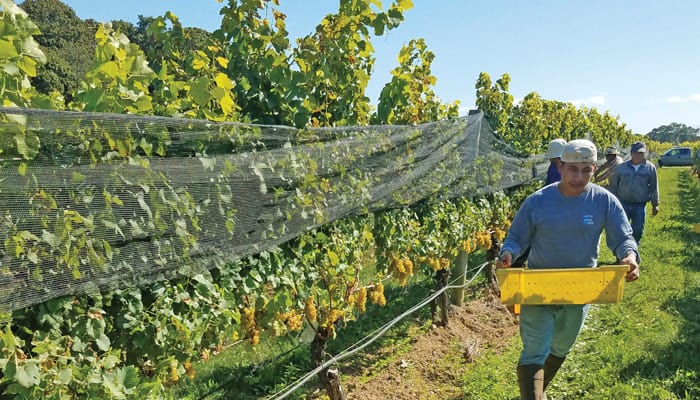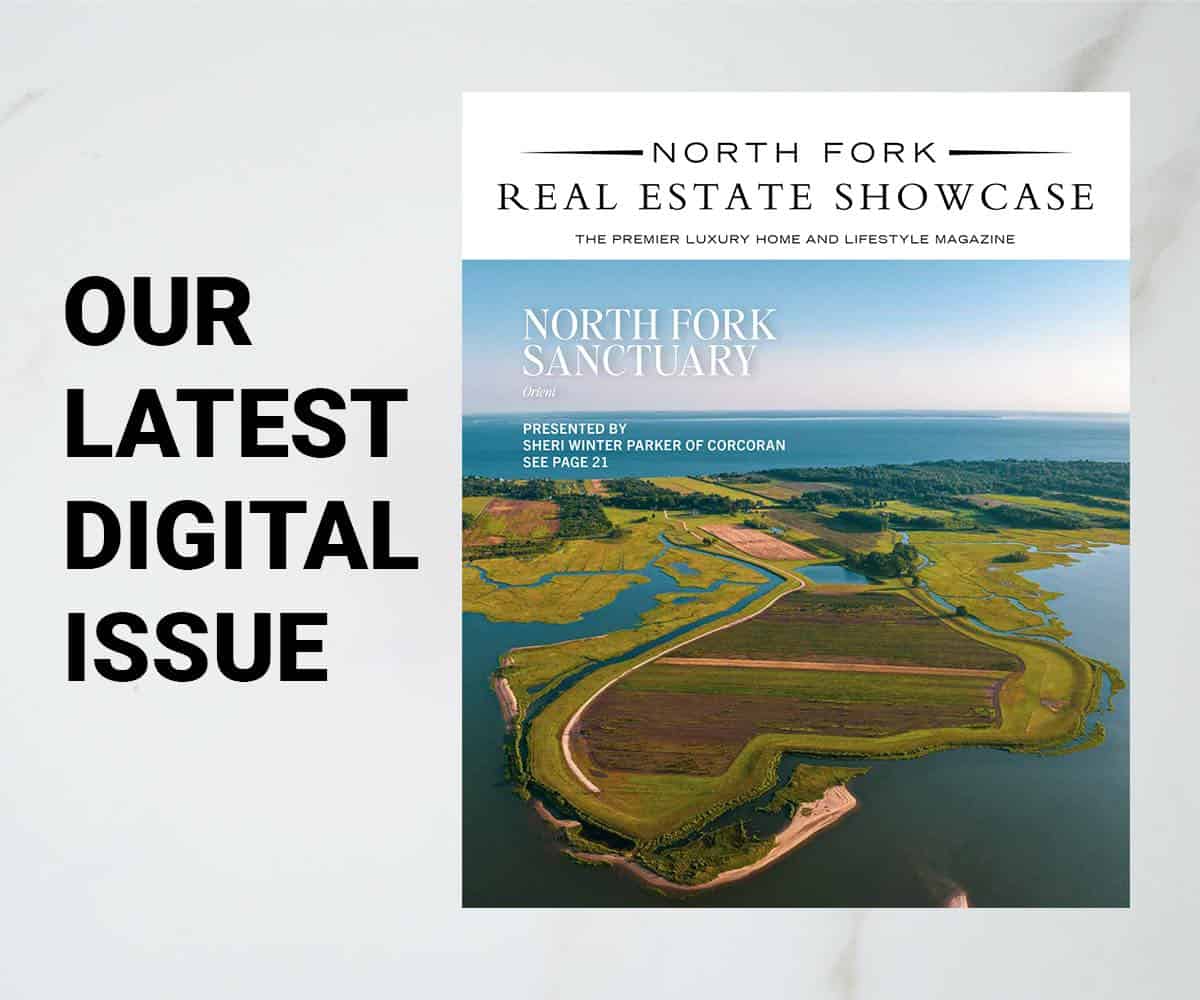Autumn’s arrival brings with it the ending lifecycle of another vintage. Wineries are now at their busiest, working around the elements to free varying grape varietals from the vines, taking them into the winery to press, ferment, age, in some cases bottle, and repeat. Purple-stained hands work tirelessly and know no time of day, or even night, as they capture the North Fork’s unique flavors in a bottle. While visitors flock to tasting rooms to sip and sample what the harvest brings, behind the vines winemakers endeavor to honor what they have grown all season long.
The characteristics that distinguish wines from region to region is the terroir. On Long Island, the cool maritime climate mixed with a distinctive glacial soil has proven to be the ideal growing environment here for more than 40 years. Cooling breezes from the Long Island Sound and the Atlantic Ocean counter excessive summer heat to ensure, as much as weather can, a plentiful harvest. However, Mother Nature still rules.
This time of year, there is no normal. “There is no average day and no average harvest,” shares Pellegrini Vineyards winemaker Zander Hargrave. “It is all about decision making. We’re sampling grapes, seeing what’s ripe and what flavors are developing. We pick everything by hand and strategize a picking schedule. It’s a highly skilled labor. I vinify everything separately and see what characteristics emerge.”
Hargrave grew up in the industry as his parents, Alex and Louisa Hargrave, were the founders of Long Island wine country having planted the area’s first vinifera grapes in 1973. Of Pellegrini Vineyards, he says the whole winery was built around certain winemaking techniques to maximize flavor, sweetness, and the goodness in the grapes. Several steps are taken to reinforce those techniques, and make it special to him as well as those that get to enjoy the various vintages in Pellegrini bottles.
Passionate about the process, Hargrave says the guys in the field spend so much time working and utilizing skills to get the fruit to its ripest point. With that in mind, he aims to respect the work and give the wine the best life in a bottle he can. Sauvignon Blanc is his favorite aromatic varietal and though the process is challenging to make, it’s one Hargrave truly enjoys.
“It’s a living process, wine is literally alive,” Hargrave says. “I look for pure fruit intensity. You want to drink it like you’re eating that grape. There is some inherent magic. It’s an alchemy that’s part science and part spontaneous creation.”

Like Pellegrini Vineyard, third-generation family operation Jamesport Vineyards began in the early 1980s with Ron Goerler, Sr. at the helm. Later, his son, Ron Goerler, Jr. delved into the business with his own children following suit. Sharing in the appreciation for the unique terroir the region has to offer, head winemaker Dean Babiar continues the practice of sustainable viticulture the Goerler family started. Environmental and social responsibility is an integral part of the business, and makes a strong showing through the seasons.
Harvest itself is a multi-faceted process. “Days are fluid,” Babiar explains. “In the morning you make sure everything hanging on the vine is still in order, smell and taste all ferments and make sure they keep ticking while weaving in all the harvesting and pressing.”
This season Babiar is finding parallels to seasons past with similar sugar concentrations, though flavors this year are much further along. When it does come time to bottle wines, final blends are performed right before bottling when the individual wines have evolved to reveal their character and complexity, resulting in vintages that are dark, spicy, and fruit-forward.
“The Sauvignon Blanc is always well-situated at Jamesport,” Babiar says. “The young vines have thrown off tiny clusters that give a range of fresh flavors and the older vines always turn out these incredibly austere wines.”
While the heart of harvest takes place in the fall from around Labor Day through Thanksgiving as the grapes prepare to come off the vine, winemaking itself is a year-long activity, according to owner and winemaker at Suhru Wines, Russell Hearn. Fully ripened grapes are picked, followed by the fermentation process and then the commencement of stabilization of the wines.
Working around the weather as many of his fellow winemakers do, Hearn’s day begins early in the morning as he inspects the fruit on the vines, determining when to pick what. “Once picked, there is a flurry of activity in the winery including analyzing the chemistry of the juice, and deciding which yeasts to use in fermentation,” he explains. “Each day ends in the winery, overseeing the fermentations of all of our wines and planning for the days and weeks ahead. As I always say, winemaking is 70% sanitation, 20% perspiration, 9% inspiration, and 1% degustation!”

The Long Island wine region experienced a cool spring followed by a warm summer, and above average temperatures in September. The quality of fruit is expected to be ideal, though each day matters. Relatively young to the local wine scene, Suhru Wines was established in 2008 and produces a lineup of crisp, bright white wines and fruit forward reds. For the first time in eight years, Hearn will produce a dry rosé, adding a seventh wine to the Suhru Wines library.
“We are very much looking forward to releasing it this coming February,” Hearn says of the rosé. “As of now, the Merlot and Cabernet Franc fruit that will be used are looking beautiful and we are excited to see the berry quality that comes into the winery this fall.”
From humble beginnings in the 1970s to establishing itself as a notable new world region, Long Island Wine Country has made a name for itself across the country. A diverse group of winemakers put their individual touch on their vineyards and what they produce, sharing a common goal of creating wine that is representative of the land, its history, and bringing out the best in each individual grape, season after season.






